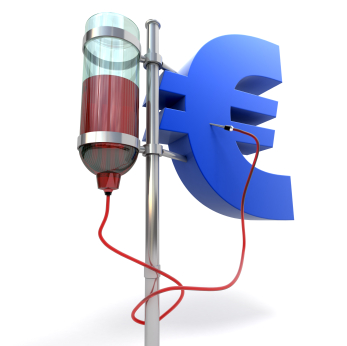The Euro (EUR) declined against the Pound (GBP) and fell to a new session low against the US Dollar (USD) on Wednesday after Manufacturing Production data out of Germany and the wider Eurozone came in below economist expectations and raised fears over the strength of the Euro economy.
Early in the session, the Euro declined to fresh multi-year lows against both the Pound and US Dollar as data out of the currency bloc’s largest economy, Germany, disappointed.
The German manufacturing PMI contracted to a reading of 49.9. The figure means that the nation’s main production sector contracted for the first time in 15 months. The data also showed that the number of new orders declined for the first time since June 2013.
The German data will be a blow to the currency bloc as the nation had been seen as the reliable industrial engine of the Eurozone economy but Wednesday’s data shows that the engine has stalled.
Also weighing on the Euro was the publication of Manufacturing PMI data for the wider Eurozone.
Factory growth across the 18-member currency bloc slowed to its worst level in 14-months after it was negatively impacted by the German contraction and ongoing weakness in France. With the region’s top two economies now showing signings of contraction, fears are growing that the Eurozone could slide back into recession by the end of the year.
‘The data makes gloomy reading. The weakening manufacturing sector will intensify pressure on the ECB to do more to revive the economy and no doubt strengthen calls for full-scale quantitative easing. The Euro area’s manufacturing economy has lost the growth momentum seen earlier in the year, lurching closer to stagnation. Output could start to fall as we move into the final quarter of the year,’ said Chris Williamson, chief economist at Markit.
The overall Euro area manufacturing PMI, calculated from this morning’s data from Markit, slipped to just 50.3, a 14-month low, close to stagnation.
The worst performers were Austria with the PMI falling to a 17-month low of 47.9; Next worst was Greece with a figure of 48.4. France and Germany recorded PMI’s of 48.8 and 49.9 respectively. The best performer was Spain, which saw a 7-month high of 52.6.
Further gains for the Pound were somewhat restrained after the UK also saw a disappointing manufacturing PMI report.
UK manufacturing activity grew at its slowest pace in 17 months last month as weak demand from the Eurozone weighed.
‘The continued weakness in Eurozone countries and the euro-sterling exchange rate appeared to particularly undermine growth in September, and resulted in near stagnation in new manufacturing orders,’ said David Noble from the Chartered Institute of Purchasing & Supply.
The Euro is forecast to remain weaker against its major peers and is likely to fall further against the US Dollar later in the session if the latest US employment data comes in strongly.
Economist attention will now focus on Thursday’s ECB policy meeting.
Euro Exchange Rate News:
[table width=”100%” colwidth=”50|50|50|50|50″ colalign=”left|left|left|left|left”]
Currency, ,Currency,Rate ,
Euro,
Euro,
Euro,
Euro,
[/table]
